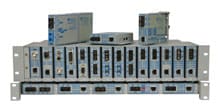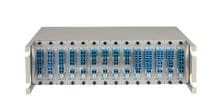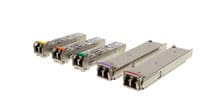- Products
- PoE Media Converters and Switches
- Ethernet & PoE Switches Product Selector
- Multi-Gigabit Ethernet and PoE Switches
- PoE PSE Commercial Switches
- PoE PSE Industrial Fiber Switches
- PoE Industrial Copper Extenders
- PoE Powered Media Converters
- PoE PSE Media Converters
- PoE Extenders & Injectors Product Selector
- Pluggable Transceivers Product Selector
- Single Pair PoE Products
- Product Lines
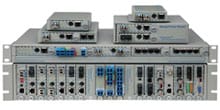
- iConverter Managed Multi-service Platform
- Copper to Fiber Media Converters
- Ethernet Media Converters
- 10 Gigabit Copper-to-Fiber
- 10/100/1000 Copper to 10 Gigabit Fiber
- 10/100/1000 Copper-to-Fiber with Integrated Management
- 10/100/1000 Industrial Copper-to-Fiber with Integrated Management
- 10/100/1000 Copper-to-Fiber with VLAN
- 10/100/1000 Dual Media Converter with VLAN
- Gigabit Copper-to-Fiber
- 10/100 Copper-to-Fiber with Integrated Management
- 10/100 Industrial Copper-to-Fiber with Integrated Management
- 10/100 Copper-to-Fiber with VLAN
- 10/100 Copper-to-Fiber
- Fast Ethernet Copper-to-Fiber
- Fast Ethernet Redundant Links
- 10Mbps Copper-to-Fiber
- 10Mbps Copper to Coax
- TDM Media Converters
- Serial Media Converters
- Ethernet Media Converters
- Fiber to Fiber Media Converters
- 10 Gigabit Fiber-to-Fiber Converter and Transponder
- 10 Gigabit Industrial Converter and Transponder
- SFP-to-SFP Fiber Converter and Transponder
- SFP-to-SFP Industrial Fiber Converter and Transponder
- Gigabit Fiber to-Fiber with 3 Rs
- 100/1000 Fiber-to-Fiber with 3 Rs
- Gigabit Fiber-to-Fiber
- Fast Ethernet Fiber-to-Fiber with 3 Rs
- Fast Ethernet Fiber-to-Fiber
- OC-3/STM-1 Fiber-to-Fiber
- OC-12/STM-4 Fiber-to-Fiber
- Carrier Ethernet Network Interface Devices
- CE 2.0 - 10G Demarcation NID
- CE 2.0 - 10G Demarcation and Aggregation NID
- CE 2.0 - 10/100/1000 Mult-port NID
- CE 2.0 - 10/100/1000 Mult-port NID with PoE
- CE 2.0 - 10/100/1000 8-Port NID
- microNID - 100/1000 compact NID
- CE 1.0 Service OAM - 10/100/1000 NID
- CE 1.0 Link OAM - 10/100/1000 Copper-to-Fiber NID
- CE 1.0 Link OAM - 10/100 Copper-to-Fiber NID
- CE 1.0 Link OAM - Gigabit Fiber-to-Fiber NID
- CE 1.0 Link OAM - Fast Ethernet Fiber-to-Fiber NID
- CWDM Multiplexers
- T1/E1 Multiplexers
- Ethernet Switch Modules
- Management System
- Chassis Options

- 1-Module Industrial Chassis
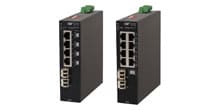
- RuggedNet Industrial Switches and Extenders
- Industrial PoE PSE Fiber Switches
- Multi-Gigabit Managed Industrial PoE+/BT Switches
- Multi-Gigabit Unmanaged Industrial PoE+/BT Switches
- 10G Managed 802.3bt PoE Switches
- 10G Unmanaged 802.3bt PoE Switches
- 10G Managed PoE+ Switches
- 10G Unmanaged PoE+ Switches
- 1G Managed PoE+ Switches
- 1G Unmanaged PoE+ Switches
- 1G Unmanaged 802.3bt PoE Switches
- 1G Managed 802.3bt PoE Switches
- Industrial SPE Switches
- Industrial Ethernet Switches
- Industrial PoE Copper Extenders
- Industrial Power Supplies

- OmniConverter Media Converter, Switches and Extenders
- PoE PSE Media Converters
- 10G Multi-Gigabit / Multi-Rate PoE Media Converter
- 10G Multi-Gigabit / Multi-Rate Media Converter
- 10/100 Multi-port PoE+ Media Converter
- 10/100 PoE+ Media Converter
- 10/100/1000 Multi-Port PoE+ Media Converter
- Industrial 10/100/1000 Multi-Port PoE+ Media Converter
- 10/100/1000 PoE+ Media Converter
- 10/100/1000 PoE++ 60W-100W Media Converter
- Industrial 10/100 Multi-port PoE+ Media Converter
- 1U Rack-Mount Shelf
- PoE PSE Compact Switches
- Multi-Gigabit Managed PoE+/BT Switches
- Multi-Gigabit Unmanaged PoE+/BT Switches
- 10G Managed 802.3bt PoE Switches
- 10G Unmanaged 802.3bt PoE Switches
- 10G Managed PoE+ Switches
- 10G Unmanaged PoE+ Switches
- 1G Managed PoE+ Switches
- 1G Unmanaged PoE+ Switches
- 1G Managed 802.3bt PoE Switches
- 1G Unmanaged 802.3bt PoE Switches
- Ethernet Switches
- Single Pair Ethernet (SPE)
- PoE Copper Extenders
- PoE Injectors
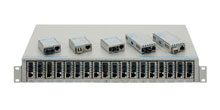
- miConverter Unmanaged Miniature Media Converters
- 10/100/1000 Copper-to-Fiber
- Industrial 10/100/1000 Copper-to-Fiber
- 10/100/1000 Ultra-Compact Copper-to-Fiber
- Gigabit Copper-to-Fiber
- 10/100/1000 Copper-to-Fiber PoE Powered
- 10/100 Copper-to-Fiber
- 10/100 Ultra-Compact Copper-to-Fiber
- 10/100 Copper-to-Fiber PoE Powered
- 18-Module Chassis
- Industrial 10/100 Copper-to-Fiber PoE Powered
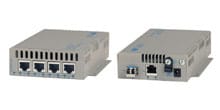
- FlexSwitch Compact Switches
- Solutions
- Company
- Support
- How to Buy
Choosing the Right Fiber Media Converter for Your Network: A Buyer’s Guide

A fiber media converter is an important tool that enables smooth transitions between different network types, specifically from copper Ethernet to fiber-optic connections. Whether you're upgrading your existing network or building a new one, selecting the right media converter fiber to Ethernet is vital to ensure network efficiency and performance.
This comprehensive guide will help you choose the perfect fiber media converter for your needs by covering essential factors such as speed, fiber types, and compatibility.
What is a fiber media converter?
A fiber media converter is a networking device that allows the seamless conversion of electrical signals used in copper-based networks (such as Ethernet) into optical signals used in fiber-optic networks. This conversion enables networks to transmit data over longer distances, extend their reach, and improve bandwidth without requiring a complete overhaul of existing infrastructure. Fiber media converters are essential for businesses and data centers that need to bridge the gap between copper and fiber cabling, facilitating smooth communication between the two different mediums.
How Do Fiber Media Converters Work?
Fiber media converters typically have two ports: one for a copper Ethernet cable and another for a fiber-optic cable. The device converts the electrical signal from the Ethernet cable into a light-based signal that can travel through the fiber-optic cable, and vice versa. This process enables data to be transmitted across much greater distances than copper cables allow. Whether for connecting devices within a building or extending connections across multiple sites, fiber media converters are a versatile and cost-effective solution for modern network infrastructure.
Considerations Before Selecting Fiber Media Converter
Assess Your Network’s Needs
Before selecting a fiber media converter, it's essential to understand your network's unique requirements. Start by considering:
- The distance between network devices: Fiber is ideal for extending network reach over long distances.
- Fiber type: Will you need a multimode to single mode fiber converter or a fiber media converter multimode depending on the distance and speed?
- Speed and bandwidth: Ensure that the fiber converter you select can support your network’s current and future data transfer needs, such as 1G or 10G speeds.
Types of Fiber Media Converters
There are several types of fiber media converters available, each designed for specific networking applications. Here are the most common types:
Media Converter Fiber to Ethernet
This type of converter is commonly used to connect copper-based Ethernet devices to fiber-optic networks. If your existing infrastructure uses copper cables but you want the benefits of fiber, this fiber ethernet media converter is a practical solution.
Multimode to Single Mode Fiber Converters
If your network operates on both multimode and single-mode fiber, you will need a multimode to single mode fiber converter to ensure seamless communication between the two types. These converters can handle the differences in distance and data transfer rates.
10G Media Converter
For high-performance networks that require faster data transmission, a 10G media converter is essential. It supports up to 10Gbps and is ideal for high-bandwidth applications like data centers or enterprise networks. You may also consider a 10GB media converter to future-proof your network.
PoE Media Converter
A PoE media converter seamlessly bridges the gap between fiber optic and copper-based networks. It transforms fiber optic signals into electrical signals, enabling the transmission of data over copper cables. Additionally, it injects Power over Ethernet (PoE) power into the copper cable, supplying up to 100 watts of electricity to devices like IP cameras or VoIP phones, streamlining network installations and reducing the need for additional power outlets.
Single-Mode vs. Multimode Fiber Converters
The type of fiber used in your network will dictate the type of media converter needed. Here's how to decide between a single mode media converter and a multimode media converter:
- Single-Mode Media Converters: These are used for long-distance connections and are compatible with fiber media converter single mode cables. If you're looking for long-range connectivity, a fiber media converter single mode is the best option.
- Multimode Media Converters: For shorter distances and lower data rates, a fiber media converter multimode will suffice. Multimode fiber is often used in local area networks (LANs) or campus environments.
Managed vs. Unmanaged Fiber Media Converters
When selecting a fiber media converter for your network, one of the key decisions you’ll need to make is whether to go for a managed or unmanaged media converter. Both types of converters serve the fundamental purpose of converting Ethernet to fiber or vice versa, but they offer different levels of control, flexibility, and monitoring capabilities. The right choice depends on the complexity and size of your network, as well as your specific operational needs.
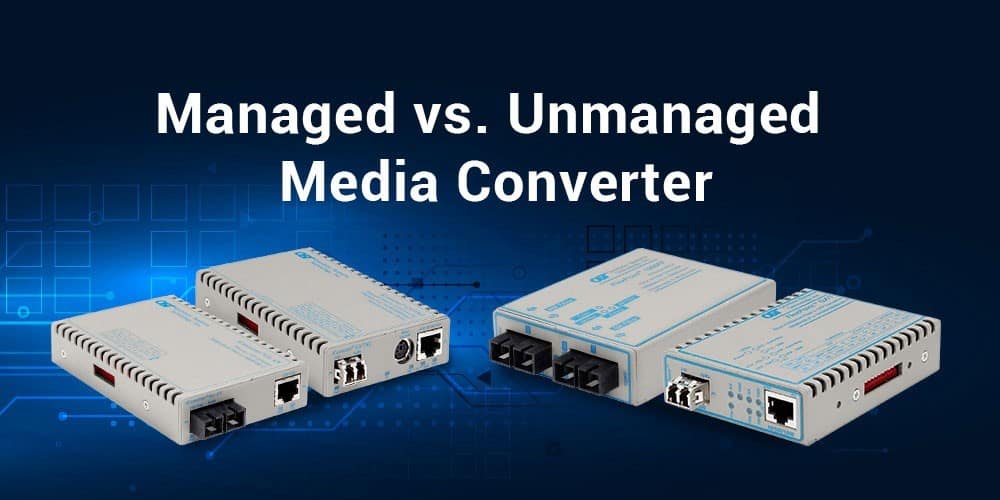
Unmanaged Fiber Media Converters
Unmanaged fiber media converters are the simplest and most cost-effective option. These devices are essentially plug-and-play, requiring no configuration or ongoing maintenance. As soon as you connect the converter to your network, it begins operating, making it ideal for smaller, less complex networks or applications where immediate deployment is needed.
Key advantages of unmanaged fiber media converters:
- Easy Setup: No need for special configuration or technical expertise. Simply connect the converter and it will start transmitting data.
- Lower Cost: Since unmanaged converters come with fewer features, they tend to be less expensive, making them a great option for businesses on a budget or networks that don’t require advanced functionality.
- Reliability: In environments where real-time network monitoring and management aren't critical, unmanaged converters offer reliable, seamless data conversion.
Managed Fiber Media Converters
Managed fiber media converters, on the other hand, offer advanced features that provide greater control over your network. These converters are ideal for larger or more complex networks where monitoring, troubleshooting, and network management are essential. Managed converters can be remotely monitored and configured, allowing you to optimize performance and respond quickly to network issues without being physically present at the location of the device.
Key features and benefits of managed fiber media converters:
- Remote Monitoring and Management: Managed converters enable IT administrators to monitor and manage the device from a central location. This allows for real-time troubleshooting and diagnostics, reducing downtime and improving network efficiency.
- VLAN Support: Managed converters often support VLAN tagging, which allows for improved network segmentation and security. This is especially useful in large, multi-tenant environments or in cases where you need to keep certain network segments isolated.
- Advanced Security Features: Managed media converters typically come with security features such as traffic monitoring and access control, ensuring that only authorized users can make changes or access network resources.
- Redundancy and Failover: Many managed converters offer redundancy options, ensuring that your network stays online even if a device or connection fails. This is crucial for mission-critical applications where downtime can be costly.
- SNMP (Simple Network Management Protocol): With SNMP, network administrators can monitor traffic statistics, link status, and device performance, and receive alerts if there’s an issue.
Consider Environmental Factors
When selecting the right Omnitron Media converter for your network, it’s essential to consider the environment in which the converter will operate. Different environments present unique challenges that can affect the performance, reliability, and lifespan of your network equipment. By understanding the environmental conditions of your installation site, you can choose a fiber media converter that is built to withstand those specific conditions, ensuring long-term stability and reduced maintenance.
Indoor vs. Outdoor Installations
The location of your fiber media converter, whether indoors or outdoors, plays a critical role in determining the type of device you need.
Temperature Tolerance
Temperature fluctuations can severely impact the performance of your fiber converter, especially in industrial or outdoor environments. Standard commercial-grade converters are typically rated to operate within a limited temperature range, usually between 0°C and 40°C (32°F to 122°F). However, industrial-grade media converters can operate in much wider temperature ranges, from as low as -50°C (-40°F) to as high as 75°C (167°F), making them suitable for outdoor use or harsh industrial settings.
Protection Against Dust and Moisture
Dust and moisture can cause significant issues for networking equipment, leading to corrosion, overheating, or short circuits. In industrial settings like factories, warehouses, or construction sites, these elements are often present in large amounts, making them potential hazards for your fiber media converter.
Vibration and Shock Resistance
If your fiber media converter will be installed in environments that experience frequent vibrations or physical impacts—such as manufacturing plants, transport facilities, or heavy industrial sites—you’ll need to choose a ruggedized converter. These converters are designed with reinforced casing and components to withstand vibrations, shocks, and other physical stressors without disrupting network performance.
Speed and Compatibility
When selecting a fiber media converter for your network, speed and compatibility are two other most important factors to consider, because right combination of speed and compatibility can significantly enhance network performance and prevent bottlenecks.
Your media converter must support the network speed required by your devices. For instance, if you're working with a high-speed network, a fiber media converter gigabit or fiber media converter 10G would be essential. Always ensure that the converter is compatible with the other devices in your network to avoid integration issues.
Speed Options: From Fast Ethernet to 10 Gigabit
Different networks require different speeds, and fiber media converters are available in a range of options to match various network demands. Here are the most common speeds:
- Fast Ethernet (100 Mbps): This speed is sufficient for basic networking tasks, such as web browsing, email, and small file transfers. It’s often used in older networks or smaller installations where high bandwidth isn’t necessary. A fiber ethernet media converter with 100 Mbps speed can bridge the gap between copper Ethernet and fiber-optic connections, providing moderate network performance for less demanding applications.
- Gigabit Ethernet (1000 Mbps or 1 Gbps): Fiber media converter gigabit is the most common choice for modern networks, offering a significant increase in bandwidth compared to Fast Ethernet. This speed is ideal for networks that handle more data, such as large file transfers, video streaming, and VoIP calls. Gigabit Ethernet is widely used in small to medium-sized businesses, data centers, and enterprise networks.
- 10 Gigabit Ethernet (10 Gbps): For high-performance networks that require ultra-fast data transmission, a 10G media converter or 10GB media converter is the best option. This speed is typically used in data centers, large enterprises, and high-traffic environments that need to support large volumes of data with minimal latency. As businesses scale, 10GB media converters future-proof the network, ensuring it can handle increasing demands over time.
- Multigigabit: Ideal for WiFi AP’s and networks beyond 1Gigabit, Multigigabit media converters support 100mbps, 1Gbps, 2.5Gbps, 5Gbps and 10Gbps speeds. This allows for flexible network connections to devices that operate at different data rates.
Understanding Network Compatibility
A fiber media converter switch must be compatible with the devices and cables already in your network to ensure seamless integration.
- Copper to Fiber Compatibility: A media converter fiber to Ethernet is typically used to connect copper-based Ethernet devices to fiber-optic networks. Ensure that the media converter supports the specific type of Ethernet device you're working with, whether it's Fast Ethernet (100 Mbps), Gigabit Ethernet (1 Gbps), or 10 Gigabit Ethernet (10 Gbps). The converter should be able to transfer data between copper and fiber without compromising the speed or quality of the connection.
- Single Mode vs. Multimode Compatibility: It’s essential to choose a media converter that is compatible with the fiber type used in your network.
Cost and Fiber Media Converter Price
Price is always an important factor when choosing the right fiber converter. While it’s tempting to opt for the most affordable option, it’s crucial to balance price with performance. The fiber media converter price varies depending on features, speed, and durability. Ensure you choose a converter that meets your needs without compromising quality.
It’s important to remember that the total cost of installing a fiber media converter goes beyond the price of the device itself. You may also need to budget for accessories, such as:
- Fiber patch cables (single-mode or multimode).
- SFP transceivers, which convert electrical signals into optical signals for transmission over fiber.
- Rack or DIN-rail mounts for organizing the converters in data centers or industrial settings.
Additionally, consider the cost of professional installation and configuration, particularly for large or complex networks. If you’re deploying multiple converters or integrating them into an existing network, it may be worthwhile to hire a professional to ensure everything is set up correctly.
Managed media converters typically cost more than unmanaged features due to the advanced features and components they contain.
Industrial temperature media converters may also cost a bit more as well for the ruggedized components and metal that help them not freeze or overheat in extreme temperatures.
Conclusion: Choose Wisely for Long-Term Network Success
Investing in the right fiber media converter is essential for optimizing your network’s performance. Whether you need a fiber media converter switch, a 10g media converter, or a fiber ethernet media converter, understanding your network's specific requirements is key to making an informed choice.
By selecting the right media converter, such as the Omnitron media converter, you ensure reliable, long-distance, high-speed data transfer across your network. Consider the speed, fiber type, environment, and fiber media converter price when making your decision, and your network will be set for both current demands and future expansions.
Whether you need to bridge copper and fiber, extend your network’s reach, or improve data speeds, choosing the perfect media converter is key to optimizing your infrastructure. Explore our range of reliable, high-performance fiber media converters designed to fit your specific needs. Contact us today to get expert advice and find the best solution for your network!

